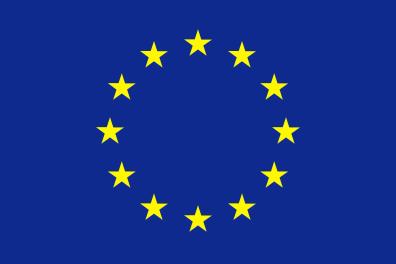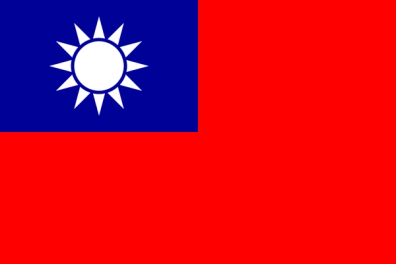Donate to Support Supercluster
Your support makes the Astronaut Database and Launch Tracker possible, and keeps all Supercluster content free.
SUPPORTSupercluster on Patreon
Your support makes the Astronaut Database and Launch Tracker possible, and keeps all Supercluster content free.
SUPPORTThis goes
to space
THEOS-2
The Geo-Informatics and Space Technology Development Agency of Thailand (GISTDA) has selected Airbus as a partner for its next-generation national geo-information system.
The end-to-end system will make Thailand one of the few nations able to fully exploit geo-information for societal benefits. Fully in line with Thailand’s 4.0 policy, the THEOS-2 program will constitute a major milestone in the development of Space in the Eastern Economic Corridor and its Digital Park.
As part of the contract, a comprehensive capacity-building program will involve Thai engineers in the development of an integrated geo-information system, ground segment, and two Earth observation satellites: a very high-resolution and a small satellite system.
The small satellite system from Airbus’ subsidiary SSTL will be assembled and tested in-country by Thai engineers to deliver technology transfer and involve local suppliers.
This will be complemented by an extensive training scheme capitalizing on Airbus’ comprehensive geo-intelligence expertise, and will further develop Thailand’s geo-spatial industry.
From the early stages of the programme, GISTDA will feed its geo-information system with satellite imagery collected by the Airbus constellation of optical and radar Earth observation satellites Pléiades, SPOT, TerraSAR-X and TanDEM-X, as well as other sources of data.
An optical satellite system delivering 0.5 m ground resolution imagery, THEOS-2 is based on Airbus’ innovative, flight-proven AstroBus-S satellite. Scheduled to be launched in 2020, it will secure the service continuity of THEOS-1, an Airbus-built satellite launched in 2008, which continues to deliver high quality imagery four years after its expected end of life. With the AstroBus-S satellite, Thailand is joining a small circle of nations with sovereign access to very high-resolution geostrategic information.
Credit: Airbus

This goes
to space
TRITON
The TRITON (FORMOSAT-7R) satellite was independently developed by NARLabs' National Space Organization (NSPO), an institution under Taiwan's Ministry of Science and Technology (MOST).
TRITON, a wind observation satellite, was originally part of the FORMOSAT-7 project as an independent satellite named FORMOSAT-7R, but was later renamed TRITON after adjustments were made to the mission.
Unlike FORMOSAT-7, which directly receives GPS and GLONASS (Global Navigation Satellite System) signals refracted by the ionosphere and atmosphere, TRITON is equipped with Taiwan-made Global Navigation Satellite System-Reflectometry (GNSS-R), which collects global navigation satellite signals reflected from the surface of the sea in low Earth orbit and uses the physical characteristics of the reflected signals to extrapolate the speed of the wind at the sea surface.
TRITON is the second satellite after the FORMOSAT-5 to be developed in Taiwan. The entire satellite, including its payload, is 82% developed and manufactured in Taiwan, and if ground equipment is taken into account, over 20 Taiwanese R&D teams and manufacturers were involved. After the launch, TRITON will also test and validate 10 key components and technologies designed and manufactured in Taiwan.
The satellite's Chinese name, meaning "Wind Hunter," was chosen by public vote, and its English name, TRITON, was derived from Greek mythology. Triton is the son of Poseidon, the god of the sea. In addition to inheriting the trident, a symbol of the god of the sea, he also possesses a conch. Whenever Triton goes on patrol, he blows the conch to raise the wind and waves, over which he has control.
Wu Tsung-Tsong, Minister of Science and Technology, stated that TRITON benefitted from NSPO's experience with the FORMOSAT-5 and further increased the proportion of Taiwan-produced space technology. These technologies include key components such as the satellite computer, power control, fiber optic gyroscope, and navigation receiver, as well as important payload instruments. NSPO has also developed a number of key technologies itself, clearly showing that Taiwan has the power to build satellites. Coupled with Taiwan's already advanced ground equipment technology, the country will not be missing out on the global boom in low Earth orbit satellites.
Wu Jong-Shinn, Director General of NSPO, explained that Taiwan's locally developed GNSS-R apparatus uses unique technology for firmware optimization and can receive up to eight datasets simultaneously. It can also receive reflected signals from Japan's QZSS (Quasi-Zenith Satellite System) in East Asia, with better performance than instruments from abroad. Data processing and application technologies were all developed by NSPO in cooperation with National Central University, National Cheng Kung University, and the Central Weather Bureau, and will enhance how the collected data is applied.
According to TRITON program leader Lin Chen-Tsung, now that TRITON has received its solar panels, the completed satellite will undergo mass properties measurement, vibration testing, sonic vibration testing, and separation pyro shock testing, as well as a final comprehensive test. When testing is completed and the satellite passes a review meeting before transport, it will then be considered ready for launch and await shipment to French Guiana.
When in orbit at 550-650 km, TRITON will receive GPS and GLONASS signals sent out and reflected off the surface of the sea. Wind field data calculated from these signals is currently the most lacking type of meteorological data, and along with high-resolution coastal wind field data from ground-based radar, it can help predict typhoon tracks, heavy rainfall, and air pollution, as well as be used in research on sea-air interaction, among other topics. It can be said that TRITON plays two roles; it is both a weather satellite and a scientific satellite.
Credit: Taiwan Space Agency (TASA)

This goes
to space
PROBA-V plus one
PROBA-V plus one, later renamed Proba-V Companion CubeSat (PV-CC), used to monitor global vegetation growth, is the newest satellite of ESA's PROBA series.
PV-CC will host on board, a telescope version of the Vegetation Imager which was used during the development of its predecessor PROBA-V. The addition of this satellite to the existing PROBA-V will complement and expand its observations in the visible to a thermal domain and will facilitate land surface temperature and water stress research.
Courtesy of ESA.

On this
rocket
Vega
Vega (Italian: Vettore Europeo di Generazione Avanzata, French: Vecteur européen de génération avancée, literal translation: Vector European Generation Advanced) joined the family of launch vehicles at Europe’s Spaceport in French Guiana in 2012. It has demonstrated impressive capabilities ranging from equatorial to Sun-synchronous orbits, from orbital to suborbital missions, from single to multiple payloads.
Unlike most small rockets, Vega is able to lift payloads ranging from a single satellite up to one main satellite plus additional small satellites and place them into separate orbits on a single mission.
Vega is designed to deliver about 1500 kg into a 700 km-altitude circular orbit at 90° inclination. This makes Vega the ideal launch vehicle for most scientific and Earth observation missions. Launching into an equatorial orbit enabled Vega to carry the maximum payload capacity of 2 tonnes with ESA’s experimental IXV spaceplane.
Vega Elements
Vega is a 3 m-diameter single-body vehicle, standing 30 m tall with a liftoff mass of 137 tonnes. It has three solid-propellant stages and a liquid-propellant upper module for attitude and orbit control as well as satellite release.
Vega History
Vega officially became an ESA programme in June 1998, when the Agency inherited the small-launcher programme of Italy’s ASI space agency.
Following Vega’s debut on 13 February 2012, ESA ensured a smooth transition of Vega from development to exploitation. This included securing the initial exploitation of Vega by supporting the development of complementary technical advances and demonstrating a range of capabilities and flexibility over five more launches.
Vega moved to full commercial exploitation in December 2015.
At the same time, ESA refined and improved the launch system configuration and operations. This lowered costs mainly by speeding up the launch campaign.
The Vega launches in 2015 (IXV, Sentinel-2A and LISA Pathfinder) displayed the capacity of the system to reach three missions per year, providing confidence to customers and helping Arianespace to maintain its lead in this market segment.
In a proof of concept flight in 2020, Vega demonstrated a new modular payload dispenser called the Small Spacecraft Mission Service (SSMS) designed to meet the need for affordable routine rideshare missions to space for multiple small satellites.
Caption courtesy of ESA.

From this
launch site
ELV - Guiana Space Center - Kourou, French Guiana
The Ensemble de Lancement Vega (ELV) pad at the Centre Spatial Guyanais (Guiana Space Centre) was previously used to launch the Europa, Ariane 1, Ariane 2, and Ariane 3 rockets under a different name.
It hosted its first launch on November 5, 1971, when a Europa rocket carried the STV-4 payload. The pad was last used in 1989 for the final Ariane 3 launch before going unused until 2012, when Vega began operations.
Located in French Guiana, the ELV pad is part of the French and European spaceport near Kourou, on the northern coast of South America.
Guiana Space Centre
The Guiana Space Centre has been operational since 1968, serving the European Space Agency (ESA), the French National Centre for Space Studies (CNES), and commercial companies such as Arianespace and Azercosmos.
A total of nine different rocket types have launched from the spaceport, including three active rockets and six retired vehicles.
The current launch vehicles operating from the Guiana Space Centre include:
Ariane 5 – for heavy payloads.
Soyuz 2 (provided by Russia) – for medium-mass satellites.
Vega – for smaller spacecraft.
The spaceport is also preparing for the upcoming Ariane 6, Vega C, and Vega E rockets, which are currently under development.
Photo courtesy of European Space Agency - S. Corvaja

GET THE SUPERCLUSTER APP
THE SUPERCLUSTER PODCAST
A podcast exploring the amazing milestones that changed space history, the wildest ideas that drive our future, and every development in this new Golden Age of Space.
Donate to support
Your support makes the Astronaut Database and Launch Tracker possible, and keeps all Supercluster content free.
SupportCOPYRIGHT 2021 SUPERCLUSTER LLC






